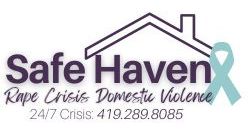Safety Planning
What is Safety Planning?
A safety plan is a personalized, practical plan that includes ways to remain safe while in a relationship, planning to leave, or after you leave. Safety planning may include how to cope with emotions, telling friends and family about the abuse, securing resources, taking legal action, and more.
A good safety plan will have all of the vital information you need and be tailored to your unique situation, and will help walk you through different scenarios. Although some of the things that you outline in your safety plan may seem obvious, it’s important to remember that in moments of crisis your brain doesn’t function the same way as when you are calm. When adrenaline is pumping through your veins it can be hard to think clearly or make logical decisions about your safety. Having a safety plan laid out in advance can help you to protect yourself in those stressful moments.
For many people who have been affected by sexual assault, current and long-term safety can be an ongoing concern. Safety planning is about brainstorming ways to stay safe that may also help reduce the risk of future harm. It can include planning for a future crisis, considering your options, and making decisions about your next steps. Finding ways to stay and feel safer can be an important step towards healing, and these plans and actions should not increase the risk of being hurt. (RAINN)
Safe Haven advocates can assist you with developing an individualized safety plan in-person by appointment or 24 hours a day/ 7 days by calling our 24-hour Crisis Hotline at 419-289-8085.





